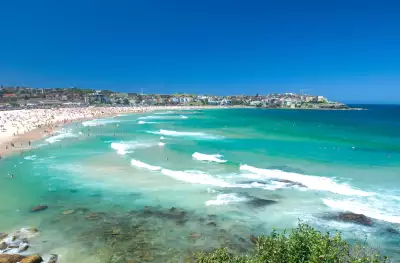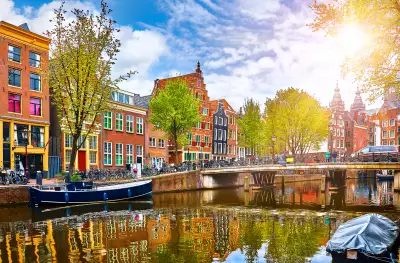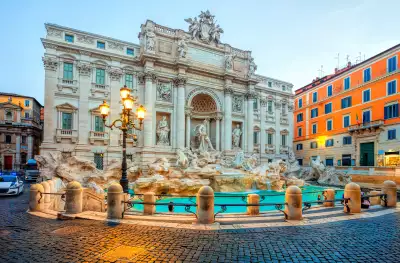Things to Do in Italy
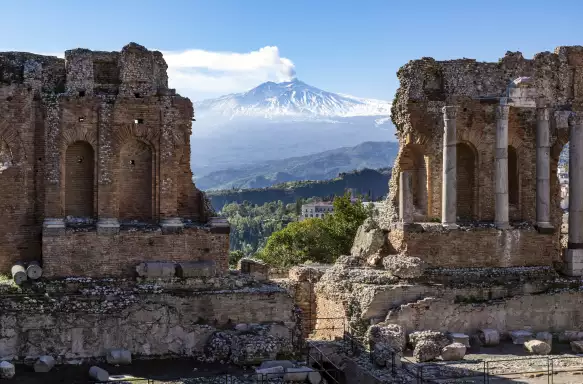
From the sun-drenched shores of Sicily to the Renaissance treasures of Florence, discover the most unforgettable things to do across Italy’s most iconic regions. Whether you're chasing ancient ruins, vineyard views, or coastal charm, this guide brings together the best of la dolce vita.
Things to do in Rome:
Rome is a living museum that set the stage for much of Modern civilisation. There's history at every turn.
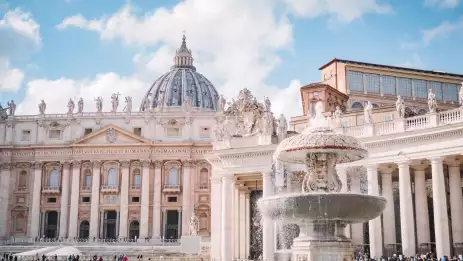
Explore Vatican City
St Peter's Basilica & Square
Though technically a sovereign city-state, Vatican City is the spiritual soul of Rome. Home to the Pope - head of the Catholic church - and a treasure trove of iconic art and architecture. Begin in St Peter's Square where Bernini's colonnades sweep around you like open arms. This vast piazza, capable of holding over 300,000 people, is overlooked by the statues of 140 saints. At its heart lies St Peter's Basilica, a masterpiece of Renaissance architecture and the epicentre of Catholicism. Inside is filled with religious significance and treasures, like Michelangelo's Pieta and the gilded Baldacchino by Bernini. For a wow moment, climb to the top of the dome and enjoy panoramic views that stretch across the Eternal City.
Vatican Museum
The labyrinthian halls of the Vatican Museum are a treasure trove of human creativity. Wander through galleries lined with classical sculpture, Renaissance tapestries and ancient maps. Your visit crescendos with the Sistine Chapel and its frescoes, depicting scenes from the Old Testament and the Last Judgement, painted by Michelangelo. Don't miss the Stanze di Raffaello (Raphael Rooms), a series of four rooms, home to extraordinarily vivid frescoes by the Renaissance maestro. The Palazzo Apostolico (Apostolic Palace) - the official residence of the Pope - adds a final flourish of opulence.
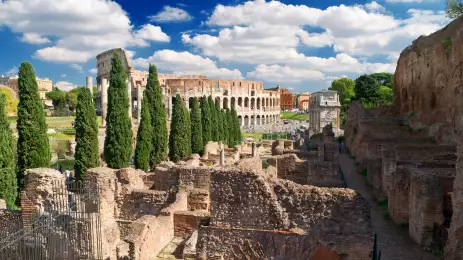
Discover its Roman past
The Colosseum
No visit to Rome is complete without seeing the mighty Colosseum. The most famous Roman ruin in the city - and arguably the world - was a gift from the ancient emperors of Rome to the people. Gladiators, wild beasts, and the dramatic re-enactments of myth and battle played out on its blood-stained sands. Today, its weather arches and underground chambers still echo with the roar of 50,000 spectators.
Roman Forum
Once the bustling heart of the Roman Empire, as you wander through the Roman Forum you are walking in the footsteps of legends, Stand where Julius Caesar was cremated, gaze upon the Arch of Titus, and imagine the speeches of politics and power that were given in this sacred valley.
The Pantheon
The Pantheon is considered a marvel of engineering and elegance. Built to honour the seven planetary gods, and later transformed into a church, its vast dome - still one of the world's largest unreinforced concrete domes - is one of the most influential buildings in Western history, inspiring architects from Renaissance Italy to Capitol Hill, Washington D.C.
Palatine Hill
Rising from the Forum, Palatine Hill is steeped in myth. It's said to house the cave where Luperca the she-wolf, took care of Romulus and Regus and where Rome was first founded. Today, you'll find the ruins of wealthy Roman residences and tranquil gardens - a tranquil escape with sweeping views over the city's historic core.
Catacombs
Beneath Rome’s sunlit streets lies a shadowy world of devotion and mystery. Though not as well known as the catacombs of Paris, Rome's catacombs feature some of the earliest depictions of the Virgin Mary painted onto the carved volcanic rock that stretches for miles underground.
Explore more things to see in Rome on our blog 4 Must-see Sights in Rome.
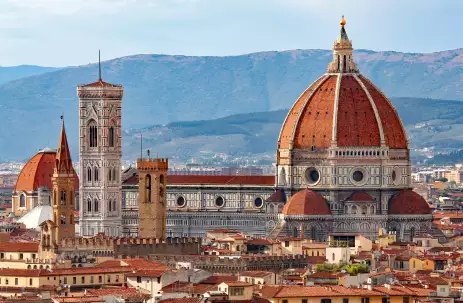
Things to do in Florence
From the terracotta rooftops to the marble-clad cathedrals, every corner of Florence tells a story.
Marvel at the Duomo
The city's most iconic landmark is the Duomo. With its red-tiled cupola and intricate pink, white and green marble façade, it crowns the Renaissance cityscape. Step inside to inside to admire Vasari's dramatic frescos of the Last Judgement, which cover the interior of the dome in a hypnotising swirl of colour and movement. Eight stained glass windows - designed by Florentine Renaissance artists - Donatello, Ghibert, Adrea del Castagno and Paolo Uccelle - depict stories of Mary and Christ and bathe the space in ethereal light. Climb Brunelleschi's famous dome for panoramic views of the beautiful city - a sea of terracotta roofs.
Wander through the world's greatest art galleries
Florence is a city for art lovers. Here, the art isn't just confined to galleries and museums - it spills into the streets, churches and piazzas. But for a concentrated dose of human creativity, head to the Uffizi Gallery. Home to many Renaissance masterpieces, including Botticellei's Birth of Venus, as well as works by Leonardo da Vinci, Titian, Caravaggio, Rembrandt and Van Dyck – you’ll find treasures in every room. Many of the pieces were originally part of a private collection belonging to the Medici family - their patronage shaped the cultural landscape of Florence.
But the Uffizi is by no means the only gallery to delight art enthusiasts in Florence, the Galleria dell'Accademia houses one of the most famous sculptures in the world - Michelangelo's David is a towering, marble symbol of human potential. The gallery also features lesser-known but equally captivating works that add to Florence's artistic heritage.
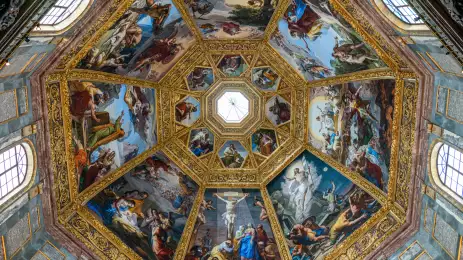
Trace the footsteps of the Medici
The Medici family bankrolled the Renaissance and left an inextricable mark on the city. To understand the Medici is to understand one of the most important facets of Florence's history. Being where they end their journey, in the Cappelle medicee (Medici Chapels), the final resting place for many of its members. Part of the San Lorenzo complex, the elegant Sagrestia Nuova was designed by Michelangelo, the Cappella dei Principi (Chapel of the Princes) which houses a grand mausoleum.
Then escape to the Boboli Gardens. Once the Medici's private playground family, these sprawling, manicured grounds are one of the most important examples of Italian-style gardens, influencing garden design across the courts of Europe. Often compared to an open-air museum, as you wander through the shaded avenues and sun-drenched terraces, you'll spot an extensive collection of statues, fountains, grottos and other architectural features. It's a paradise for garden lovers.
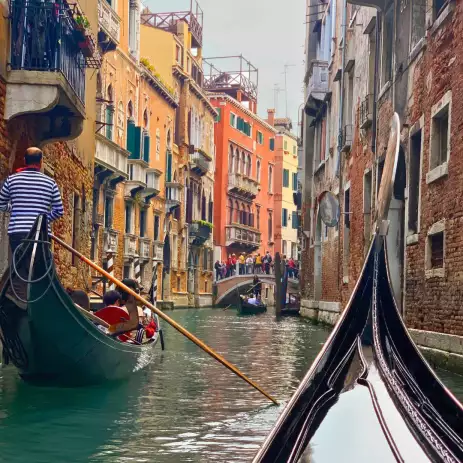
Things to do in Venice
An ethereal maze of canals, marble palaces and Renaissance splendour floating impossibly on a lagoon - Venice is a city like no other.
Sightsee in St. Mark's Square
Piazza San Marco (St Mark's Square) is the beating heart of Venice. Dating back to the 12th century, this grand square is surrounded by iconic landmarks making it a must-see in the Floating City:
St Mark's Basilica
Basilica di San Marco is a shimmering mosaic of Byzantine opulence, originally built to house the stolen relics of St. Mark and rebuilt after a fire in 932. The current cathedral was designed based on the Greek cross design, its five domes dominate Venice's skyline. Inside, is the Pala d'Oro (golden panel), a blinding altarpiece of intricate gold mosaics depicting biblical stories. Don't miss the Zen Chaple, the tomb of St. Mark and the treasury, filled with relics, amassed from the Fourth Crusade.
The Doge's Palace
Formerly the residence of Venice’s most powerful ruler, the Doge's palace is a masterpiece of Gothic architecture and political power. The palace’s rooms are ornately decorated, many with wood carvings. However, over the centuries, not every visitor frequenting the Doge’s Palace admired the artwork. Many were interrogated there, then ushered over the connecting 16th-century Bridge of Sighs – best appreciated from a gondola on the canal below – to a prison on the other side.
The Campanile Bell Tower
For a bird’s eye view of Venice, climb the 414 steps up the Campanile, the square’s imposing tower. Originally a lighthouse, this is where Galileo demonstrated his telescope to a sceptical public. From the top, Venice is a tapestry of terracotta rooftops, glistening canals and distant islands obscured by lingering mist.
The Torre dell'Orologio
The Torre dell'Orologio (Clock Tower) is marvel of Renaissance technology and engineering, the Astronomical clock is the beating - or should we say 'ticking' - heart of the city. Climb the narrow staircase to discover its inner workings and learn about the zodiacal and lunar cycles it tracks - ideal for horologists, historians, tinkerers and curious minds alike.
The Museo Correr
Tucked away at the far end of the square, the Museo Correr offers a deep dive into Venetian history, from its founding to its union with Italy in the 19th century and more.
Discover more of our top things to see and do in Venice on our blog Things to Do in Venice – 1, 2 and 3-Day Venice Itinerary.
Take a gondola ride
This is a cliché worth embracing. Navigate some of the world's most famous canals just as the aristocrats of old did - laid back on a velvet cushion. Musts are, of course, the bustling Grand Canal and under the famous Bridge of Sighs. However, don't miss the smaller quieter canals past more authentic parts of the city where you'll zig-zag through narrow spaces and under low bridges - here old palazzos have docks instead of driveways. With the only sound of the water lapping against the stone and the dip of an oar - the city reveals its most romantic self.

Things to do in the Italian Lakes
The glimmering, glacier-made lakes of northern Italy have long been the playground of poets, aristocrats, and dreamers offering a timeless escape.
Step back in time at Lake Garda
The largest of the Italian lakes, Lake Garda is perfect for budding historians and adventure seekers. At the southern tip, lies the town of Sirmione, a charming town on a narrow peninsula. Here, you'll find the Grotte di Catullo; the remains of a sprawling Roman villa built between the 1st century BC and the 2nd century AD.
Nearby, the Rocca Scaligera, a 14th-century castle with crenelated towers and a drawbridge, sits right on the water's edge of the lake, seemingly plucked from a medieval fairytale.
The lake is also a haven for water sports - the upper lake's steady winds are perfect for wind sports like sailing, surfing, kitesurfing and windsurfing while the lower lake' calm waters are better suited to diving, kayaking, canoeing and water skiing.
Find out more about what to do in Lake Garda on our blog 24 hours in Lake Garda.
Discover the charming towns and villas of Lake Como
More peaceful and elegant than Lake Garda, the shores of Lake Como are lined with pastel-hued villages and opulent villas.
Start in Como, a city with a fascinating mix of Gothic grandeur and lakeside charm, Its cathedral, cobbled streets, and lively piazzas set the tone for exploration. Then head to Bellagio, often called the “Pearl of the Lake,” where steep stairways like the Salite lead from the waterfront to a maze of chic boutiques, narrow cobblestones and steep stairways
Varenna offers a quiet escape with cosy cafes, restaurants, artisan shops and obligatory gelaterias. At the heart of the village lies Piazza San Giorgio Square, hosting the Church of San Giorgio, a 14th-century church with a blend of Romanesque architecture and Gothic flourishes.
No visit to Lake Como is complete without touring its historic villas - Villa d'Este, Villa Carlotta, and Villa del Balbianello - which are celebrated for their architecture, gardens and historical significance.
Wondering which of the great Italian lakes to visit? Read our blog Lake Como vs Lake Garda.
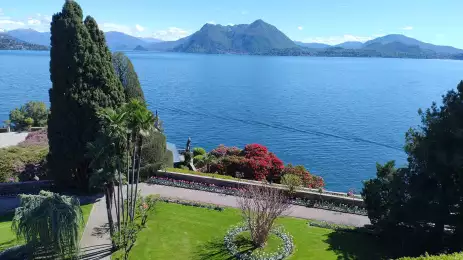
Take a boat ride to visit Lake Maggiore's islands
Lake Maggiore is surrounded by hills and mountains that shelter its banks from the cold northern winds. Like its counterparts, there are many lovely villages and towns on its shores but it's most well-known for its islands. There are 11 islands in Lake Maggiore, including the archipelago of the Borromean Islands. Isola Madre is home to a botanical garden, rich in rare plants - ideal for any horticulturalist. On Isola Bella, you'll find the 17th-century Palazzo Borromeo and its picturesque gardens. Isola del Pescatori, a traditional fishing village, is the only island home to a permanent population making up its enchanting village and harbour.
Other lakes:
- Lake Orta - Known for its picturesque villages, particularly Orta San Giulio, with its charming streets and the iconic Sacro Monte di Orta, a UNESCO World Heritage site
- Lake Iseo - Known for its serene beauty, it's less commercial than other Italian lakes, perfect for a more authentic experience.
- Lake Scanno - known for its heart shape.
Find out more about the Best Italian Lakes to visit on our blog.
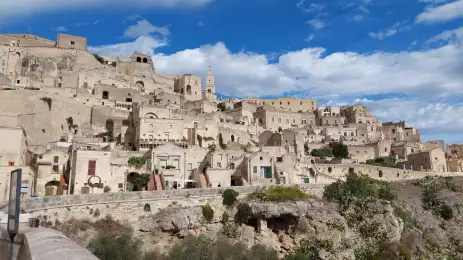
Things to do in southern Italy
In southern Italy, ancient ruins meet dramatic coastline and timeworn villages sit beside the shimmering seas.
Step back in time in Pompeii and Herculaneum
Most people know Pompeii, but wandering the ruined streets of this once thriving hub it's hard not to be struck by the scale of it - and the horror. Wander its cobbled streets, past temples, and bathhouses - even the amphitheatre remains largely intact. The graffiti on the walls commenting on political events, romantic entanglements and the gossip of the day gives us a visceral connection to the past - an ancient social feed etched into stone.
Just 20 minutes away is the lesser known - and in many ways more impressive - Herculaneum. Also destroyed by Vesuvius' eruption in 79AD, and covered by almost 5 times more ash, the level of preservation is even better than Pompeii, the frescoes and mosaics still display their vibrant colours. Here the atmosphere is more intimate, offering a different perspective on Roman daily life than Pompeii.
Visit the cave dwellings of Matera
Matera is carved from stone and steeped in time. Thought to be the world's third-longest continuously inhabited human settlement, its Sassi Cave Houses - a UNESCO World Heritage Site - are a labyrinth of rock-hewn structures featuring everything you'd expect from a conventional town, including churches, shops and artisan workshops dating back over 9,000 years.
Visit the House Cave of Vico Solitario, furnished to reflect daily life in the cave houses or descend to the Crypt of the Original Sin, a rock church founded by the Benedictines famed for its incredible frescos giving it the nickname the “Sistine Chapel of Rupestrian Art”. For sweeping views of the Sassi (an excellent spot for a photo) head to the Piazzetta Pascoli of Matera, a romantic balcony.
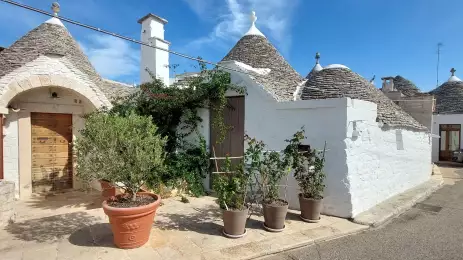
See the truilli of Alberobello
The entire town of Alberobello is a UNESCO World Heritage Site thanks to its whimsical architecture. Throughout the old town, you'll find whitewashed, cone-shaped dwellings with limestone roofs that look like they were plucked from the pages of a fantasy novel. Dating back to the 14th century, they were designed to be quickly dismantled to avoid paying taxes under the Kingdom of Naples.
Remarkably, the trulli have proved to be anything but temporary. Many have been transformed into vacation rentals, boutique hotels, and private homes, as well as shops and restaurants, giving visitors plenty of opportunities to peek inside these enchanting structures.
Eat Neapolitan pizza in Naples
For foodies, no trip to southern Italy should be considered complete without a pilgrimage to the birthplace of pizza. Here, pizza isn't just food - it's a cultural institution. Chefs utilise locally sourced ingredients, like San Marzano tomatoes, fior di latte mozzarella, and fresh basil, to ensure the highest quality and flavour. It's so historically and culturally significant to Naples that Neapolitan pizza is recognized as an Intangible Cultural Heritage by UNESCO.
Beyond the pizzerias, Naples has a charming waterfront under the shadow of Vesuvius and a historic centre with Baroque churches and bustling markets to explore - ideal for working up an appetite!
Drive along the Amalfi Coastal Road
Few drives in the world rival the drama of the Amalfi Coast Drive. Winding its way along the Italian coastline south of Naples, the route is breathtakingly beautiful, albeit a little terrifying thanks to its hairpin bends and steep coast cliffs. The road links the 13 towns and villages along the coast including:
Positano
Cascading pastel-hued houses cling to the cliffs. In its centre, you'll find chic boutiques and frame pebble beaches. While you're here, enjoy a tipple of Limoncello at its freshest, thanks to its proximity to fertile lemon groves.
Ravello
Perched on a hilltop with sweeping views and lush gardens. Don't miss Villa Rufolo a beautiful 13th-century villa and gardens that overlook the Tyrrhenian Sea.
Amalfi
Once a maritime powerhouse, this UNESCO-listed town boasts Byzantine and Arab-Norman architecture, the grand Duomo di Sant'Andrea, and lively piazzas, perfect for people-watching.
Find out more about the Amalfi coast on our blog Discover Sorrento and Visit the Stunning Amalfi Coast.
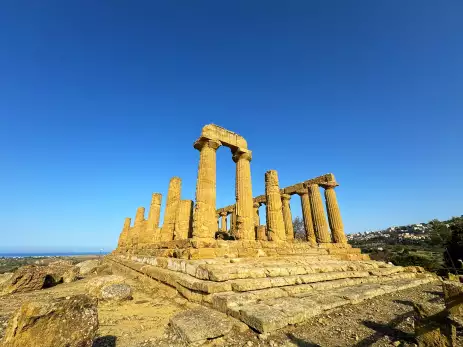
Things to do in Sicily
This Italian island is at the crossroads of civilizations, a land of contrasts where Greek temples rise from golden hills, Baroque cities glow in the sun, and volcanoes nurture some of Italy's most exciting wines.
Walk among the gods in the Valley of the Temples
Time has stood still in Agrigento's Valley of the Temples. It's one of the most impressive archaeological sites in the Mediterranean with ancient Greek temples - some nearly 2,500 years old - standing in majestic ruins surrounded by olive groves and sea views.
The Temple of Concordia, is remarkably well-preserved, rivalling the Parthenon in grandeur. If you're lucky enough to be wandering the site at golden hour, with the scent of wild herbs drifting on the wind, it's easy to imagine the rituals and reverence of a long-lost world.
Sip wine on the slopes of Mount Etna
Rising from Sicily's eastern coast is Europe's most active Volcano, Mount Etna Thanks to the volcanic coil, high altitudes and dramatic temperature shifts, it's also one of Sicily's most dynamic wine regions.
Spend a day exploring Enta Wine Route, home to boutique wineries and centuries-old estates. Many of the vineyards have panoramic views of the rocky, lava-streaked slopes and the Ionian Sea beyond. Enjoy tastings of Nerello Mascalese, Carricante, and other Indigenous varietals paired with local cheeses, olives and sun-dried tomatoes - the full Sicilian experience.
Get lost in the streets of Ortigia
A compact island, connected to the more Syracuse by a short bridge, Ortigia Island is a labyrinth of Baroque beauty, ancient ruins and seaside charm.
Visit the white stone Dumo di Siracusa, a cathedral built atop a Greek temple, and sip on aperitive in Piazza del Duomo, one of the most beautiful squares in Italy. As the sun sets, stroll along the seafront promenade and watch the sky turn to fire over the Ionian Sea.
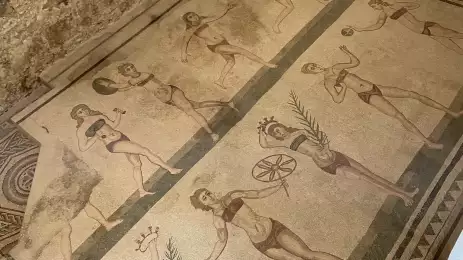
Marvel at the mosaics of Villa Romana del Casale
Tucked into the hills near Piazza Armerina, the Villa Roman del Casale is like no other. Thought to have been owned by one of the joint Emperors - which explains its size and richness of decoration - its floors are covered in over 3,500 square metres of mosaics - some of the finest and most extensive in the Roman world. From mythological scenes to the famous “Bikini Girls” mosaic, these vibrant artworks offer a vivid glimpse into the life of the Roman aristocracy. The villa is a UNESCO World Heritage Site and a must for art and history lovers alike.
Cruise the Aeolian Islands
Off Sicily’s northern coast lies the Aeolian Islands, a volcanic archipelago of rugged beauty and crystalline waters best explored by boat.
Lipari is the largest and most accessible, with lively harbours and ancient ruins. Salina is a green oasis known for its capers and sweet Malvasia wine. For a touch of drama, sail past Stromboli, an active volcano that frequently erupts in fiery displays - best viewed from the deck of your boat under a starlit sky.
For more information on Sicily, see our Sicily travel guide.

Things to do in Sardinia
Relax on the beaches of the Costa Smeralda
Costa Smeralda (Emerald Coast) is perhaps the best-known corner of Sardinia, yet completely unlike anywhere else on the island. It's known for its white and pink sands, small crescent-shaped bays hemmed in by jumbles of reddish rocks, and impossibly clear waters. Porto Cervo - its main town - is an exclusive playground for the fabulously well-heeled and famous, and its pristine appearance and pale colour palette are a result of strict building regulations. But beyond the glitz of the town, you'll find hidden coves like Spiaggia del Principe and Cala Capriccioli, where the sea shimmers in impossible shades of blue.
Wander the Streets of Cagliari
Sardinia’s capital, Cagliari, is a sun-drenched city of hilltop views, golden facades, and lively piazzas. Climb to the Castello district for sweeping views of the Gulf of Cagliari, then descend into the marina for seafood, aperitivi, and a taste of island life.

